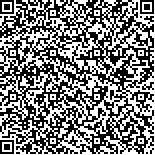|
| 引用本文: | 李奇,张超,于天彪,王宛山.基于多磨粒同路径划擦仿真的自由磨粒抛光材料去除行为[J].中国表面工程,2024,37(4):240~250 |
| LI Qi,ZHANG Chao,YU Tianbiao,WANG Wanshan.Material Removal Behavior of Free-abrasive Polishing Based on Simulation of Multiple Abrasive Particles Scratching along the Same Path[J].China Surface Engineering,2024,37(4):240~250 |
|
| |
|
|
| 本文已被:浏览 1117次 下载 1128次 |

码上扫一扫! |
|
|
| 基于多磨粒同路径划擦仿真的自由磨粒抛光材料去除行为 |
|
李奇,张超,于天彪,王宛山
|
|
东北大学机械工程与自动化学院 沈阳 110819
|
|
| 摘要: |
| 传统对自由磨粒抛光材料去除机理研究的建模方法为单磨粒划擦仿真,针对磨粒数量对材料去除行为的研究还比较少, 抛光过程中材料去除机理的研究对工艺参数选择和优化意义重大。建立纳米级材料去除尺度下多磨粒同路径划擦钛合金热力耦合有限元模型,对比分析不同抛光工艺参数下,磨粒数量对工件表面材料去除行为的变化规律,并对抛光过程中材料去除深度、应变及应力等指标进行对比分析,研究工艺参数及磨粒数量对划擦接触区物理场的影响。结果表明:磨粒低速划擦时,材料为连续式去除,磨粒高速划擦时,材料为间断式去除,多磨粒相对于单磨粒可以提高材料去除深度的均匀性。揭示了抛光微观材料去除过程中磨粒数量对材料去除行为的影响机制。 |
| 关键词: 抛光 多磨粒 同路径 材料去除 划擦 |
| DOI:10.11933/j.issn.1007-9289.20230910002 |
| 分类号:TH161 |
| 基金项目:国家自然科学基金(2017YFA0701201) |
|
| Material Removal Behavior of Free-abrasive Polishing Based on Simulation of Multiple Abrasive Particles Scratching along the Same Path |
|
LI Qi,ZHANG Chao,YU Tianbiao,WANG Wanshan
|
|
School of Mechanical Engineering & Automation, Northeastern University, Shenyang 110819 , China
|
| Abstract: |
| According to the contact mode between abrasive particles and grinding tools, polishing can be divided into fixed abrasive particle polishing and free abrasive particle polishing. Free-abrasive particle polishing is the most widely used polishing method, and the study of material-removal mechanism during the polishing process is of great significance for the selection and optimization of process parameters. A coupled finite-element model was established for titanium with multiple abrasive particles and the same scratch path during nanoscale material-removal process. In the actual polishing process, the possible overlap rate of abrasive particle trajectories in the adjacent scratch paths (micro-trajectory of abrasive particles) of the workpiece material is between 0 and 100%. This special case of 100% overlap rate is selected for research, and through the study of this special case, universal rules are revealed. A comparative analysis was conducted on the effect of abrasive particle quantity on the surface material-removal behavior of workpieces under different polishing process parameters, and the depth, strain, and stress of material removal during the polishing process were compared and analyzed, in order to study the effects of process parameters and the number of abrasive particles on the physical field of the scratch contact zone. The results show that, during the abrasive material-removal process of, there are two stages: initial and stable scratching. The depth of material removal during the initial scratching stage is relatively low. As scratching progresses, the scratching heat softens the material, and the depth of material removal gradually deepens, entering the stable scratching stage. The results show that when the abrasive particles are scratched at low speeds, the material are continuously removed,while when the abrasive particles are scratched at high speeds, the material is intermittently removed. Multiple abrasive particles can improve the uniformity of material-removal depth compared to single abrasive particle. The results show that the average depth of material removal increases with the increase of scratch force, and the width of the groove increases with the increase of scratch force. Scratch speed affects the amplitude and period of the fluctuation. In the process of discontinuous material removal, as the scratch speed increases, the number of contacts between the abrasive particles and the material gradually decreases; but, the depth of single removal gradually increases. The results show that there is a positive correlation between the stress value in the scratch zone and the depth of material removal. The stress value in the scratch zone increases with the increase of scratch force, while the number of abrasive particles has no significant effect on the average stress value. The strain value in the scratch zone increases with the increase of scratch force, and the average strain value also increases with the increase of abrasive particles. The number of abrasive particles has a significant impact on the average strain value. As scratch progresses, the temperature in the scratch zone gradually decreases, and the descent speed is very fast. The highest temperature in the scratch zone increases with the increase of scratch force and scratch speed. The influence of scratch force and scratch speed on the highest temperature in the scratch zone is significant. When the abrasive particles scratch at low speed and reach the maximum material-removal depth, the normal force of the workpiece on the abrasive particles is equal to the scratch force. Therefore, it is an approximate fixed-depth, material-removal method. When the abrasive particles scratch at high speed and reach the maximum material-removal depth, the normal force of the workpiece on the abrasive particles is greater than the scratch force, and the material-removal depth gradually decreases, The normal force of the workpiece on the abrasive particles also decreases at the same time. When the normal force is less than the scratch force, the material-removal depth gradually increases and repeats, producing a wavy motion trajectory. The mechanism that the number of abrasive particles affects the material-removal behavior during the micro material removal process of polishing is revealed. |
| Key words: polishing multiple abrasive particles same path material remove scratching |
|
|
|
|

